This guide provides a walkthrough on how to do the Reflexivity & Bias Tracker Lens analysis with Qualz.ai. This lens is ideal for researchers seeking to enhance rigor, neutrality, and reflexive awareness in qualitative interviews, especially in values-driven or socially sensitive studies.
Step 1: Prepare Your Interview Transcripts
To get started with Reflexivity & Bias Tracker Lens analysis, you’ll need transcripts of interviews uploaded into your Qualz.ai workspace. You can do this in two ways:
- Use AI-Moderated Interviews: If you have conducted interviews using Qualz.ai’s AI-Moderated Interview feature, transcripts are automatically generated, saving you significant time and effort. Ensure these sessions are marked as complete.
- Upload Existing Transcripts: For interviews conducted manually or transcribed elsewhere, you can easily upload your transcript files. Qualz.ai supports various common formats, including DOCX, PDF, and TXT. Navigate to the appropriate section in the platform to upload and process these files.
Step 2: Navigate to the “Run Analysis” Section
With your transcripts prepared, you can initiate the analysis process
- Click on the “Run Analysis” tab in the top menu.
- The “Run Analysis” area provides the option to select the type of lens for the analysis.
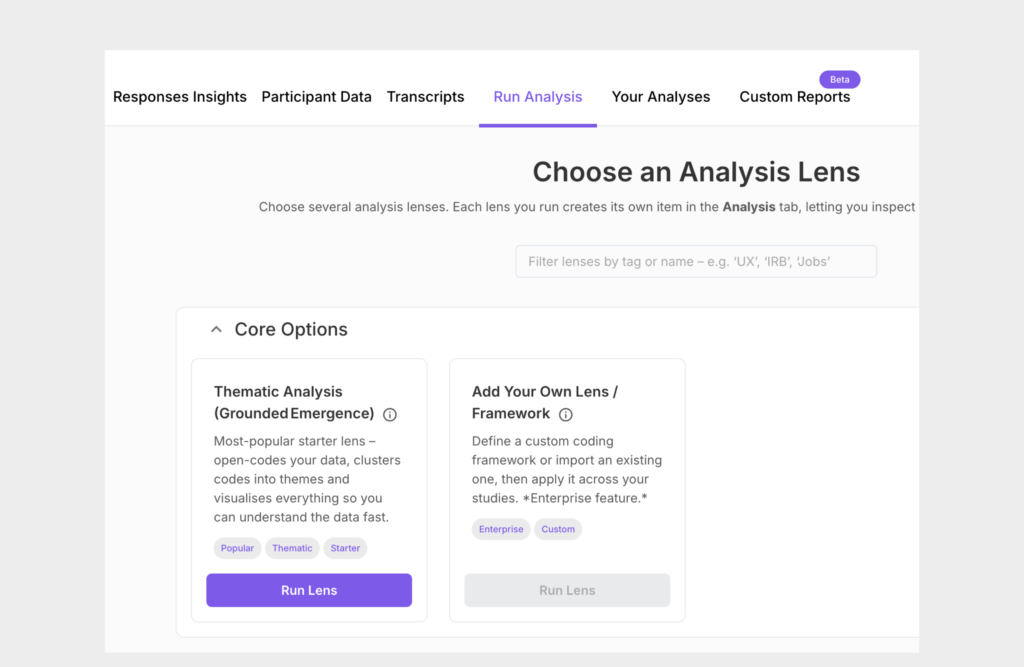
Step 3: Select a Lens and Your Interview Transcript
You can choose from multiple lens types, such as
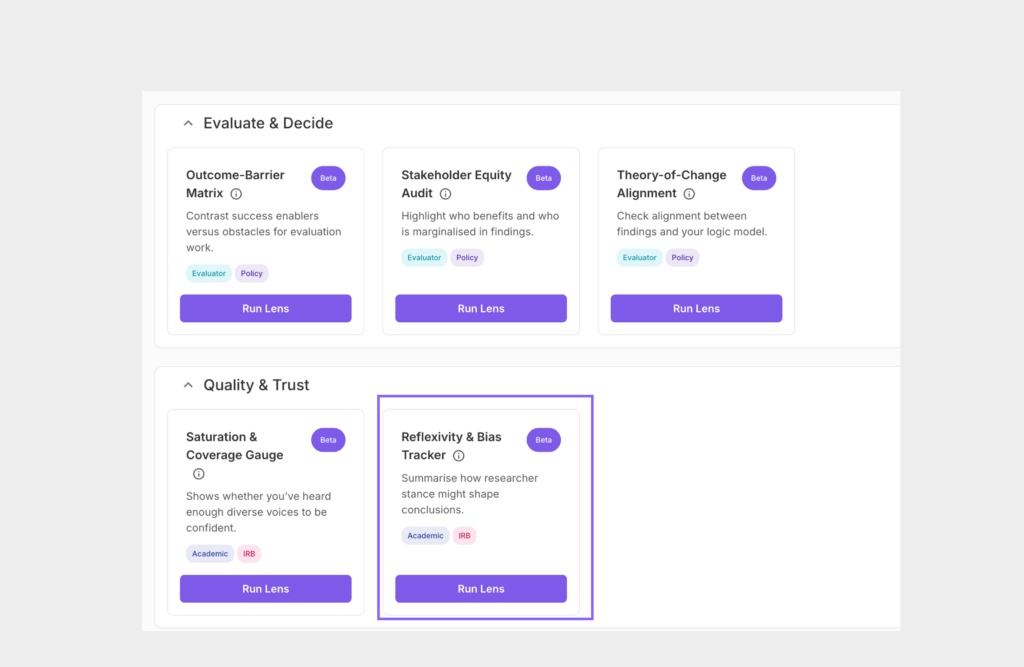
Here, we have selected the Reflexivity & Bias Tracker Lens.
- Click on Run Lens to get started
- Check the box next to each transcript you wish to analyze.
- Click the Submit button to run the analysis.
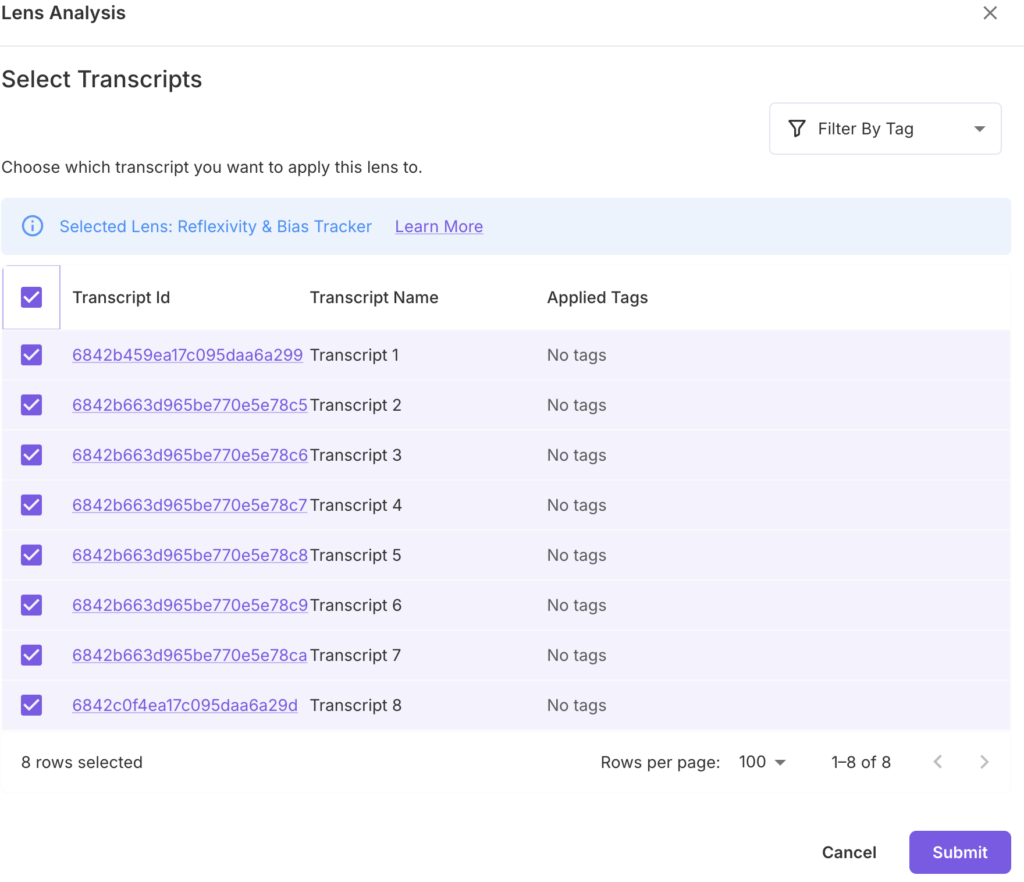
Step 4: View the Results in “Your Analyses”
Go to the “Your Analyses” tab to view your completed analysis.
With Qualz.ai’s Reflexivity & Bias Tracker Lens, researchers can uncover how their assumptions, affirmations, or question framing may shape participant narratives and skew findings.
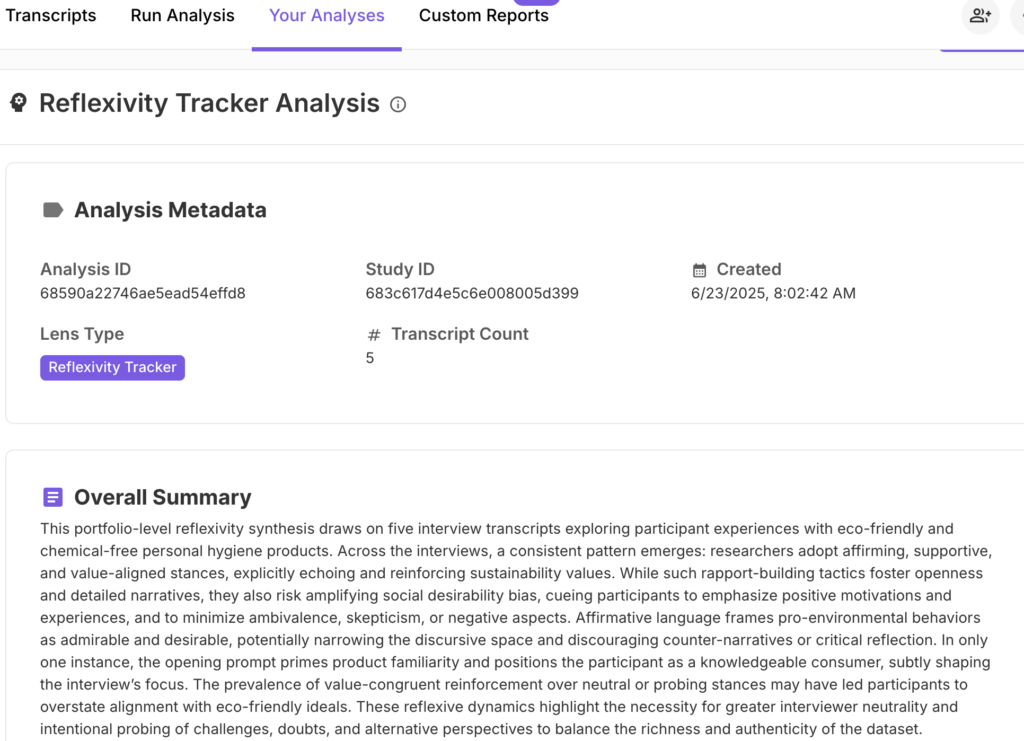
This lens analysis provides a portfolio-level synthesis of interviewer influence, surfacing patterns of value-affirming language and social desirability bias that may constrain participant diversity and critical reflection.
It also breaks down how often interviewers reinforce or assume specific value positions, helping identify bias in the researcher’s stance.

The lens visualizes how often a particular positionality, such as being affirming or value-aligned, appears across transcripts and illustrates the downstream influence of such alignment on participant responses.
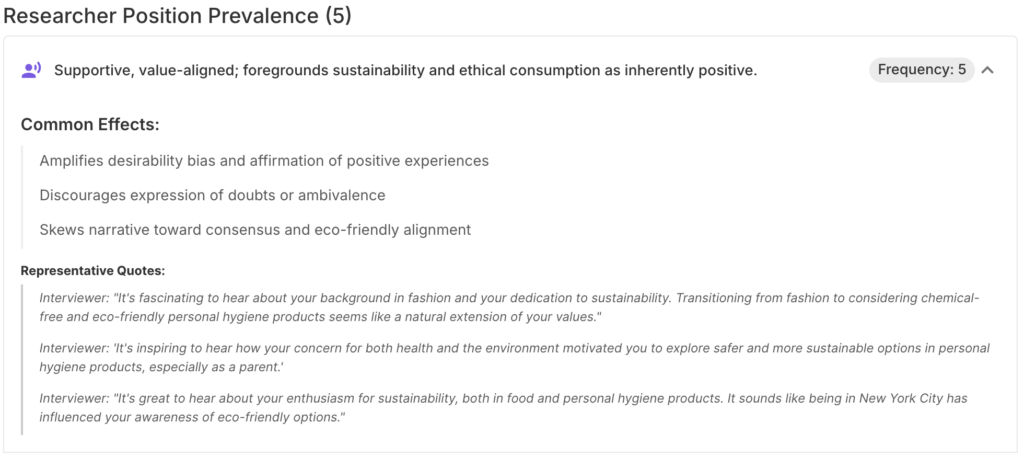

This lens contextualizes the researcher’s positional influence by combining qualitative excerpts with interpretations, with notable signals about how affirmation or bias might shape the data collected with representative quotes.

This lens uncovers actionable guidance to strengthen neutrality and reflexivity, such as adopting open-ended questioning, probing for counter-narratives, and revising value-laden prompts to elicit more balanced insights.

Ready to uncover hidden biases and elevate research integrity?
Run a Reflexivity & Bias Tracker Lens analysis now to surface interviewer influence, reinforce neutrality, and unlock richer, more authentic participant insights. Schedule a demo now!



